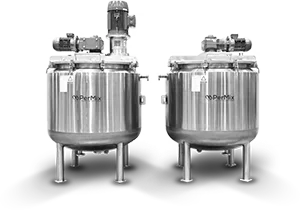Industrial Mixers
PerMix News & Updates



The pharmaceutical industry is entering a new era. Traditional pill presses and large-scale batch production are no longer the only tools shaping how we deliver medicine. 3D printing—also known as additive manufacturing—is transforming drug development and personalized medicine.
3D printing offers something conventional pharmaceutical manufacturing cannot: customization at scale.
The FDA approval of Spritam (an epilepsy treatment) in 2015 was the first sign that 3D printed pharmaceuticals were not just theory, but reality. Since then, global pharmaceutical companies and research institutions have been investing heavily in this technology.
While the potential is exciting, 3D printing in pharma faces unique challenges:
The foundation of successful 3D printing in pharma begins not with the printer itself—but with powder preparation.
For over 70 years, PerMix has engineered advanced powder mixing solutions for industries where precision and reliability are non-negotiable. Our expertise in pharmaceutical powder mixing has made us a trusted partner as 3D printing takes hold.
These mixers are designed to achieve homogeneous blending of APIs and excipients. The vertical design is space-efficient and ensures powders are folded, lifted, and dispersed evenly without degrading sensitive ingredients.
When powders require controlled conditions, PerMix’s vacuum technology provides:
3D printing in the pharmaceutical industry is not just about convenience—it’s about revolutionizing patient care. From personalized therapies to on-demand production, this technology depends on powders that are mixed, dried, and prepared with absolute precision.
PerMix answers this need. With decades of engineering expertise and proven mixing solutions, we are empowering pharmaceutical companies and research organizations to confidently explore the possibilities of 3D printing while maintaining quality, compliance, and innovation.
